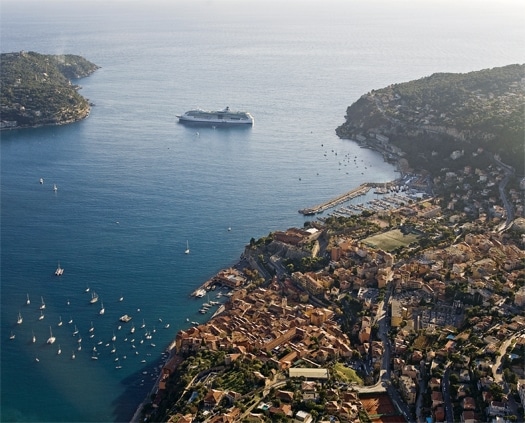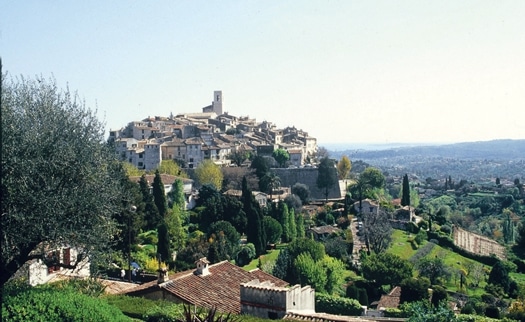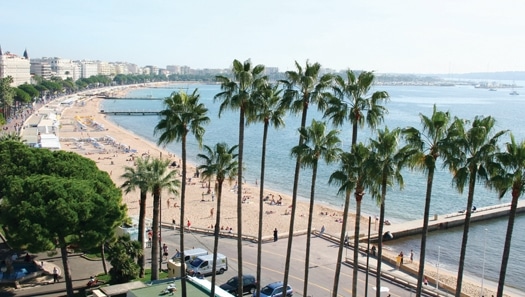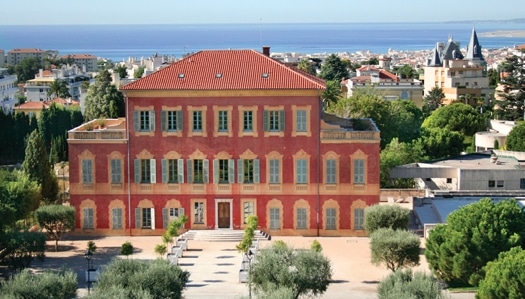
ytgnov17cy525.jpg
As I sat down to write this story, I remembered the unchecked lottery ticket in my wallet. Alas, I did not win, but as usual, I appreciated the fantasies that a $1 gamble had enabled. An $18 million jackpot doesn’t go that far in the French Riviera, but I had a pretty good plan for making it last.
The first thing I’d do would be to buy a boat: a 52-foot Menorquin with a flybridge. These yachts are Mediterranean natives, based on the ancient gozzo-like llauts, and perfect for exploring the coastline or avoiding congested summer highways when you have a sudden hankering for lunch in St.-Tropez at Club 55.
I’d set myself up with a little apartment in the Port Vieux (old town) of Nice- something ancient, with very high ceilings, big shutters, and window boxes brimming with flowers. My mornings would start with taking the dogs on a walk to the market, where I’d fill a basket with fresh fruits, vegetables, herbs, and flowers. The morning ritual would continue with a stop for café au lait and Le Monde at a local sidewalk café, where some morsels of croissant might “accidentally” be dropped for my canine companions. I’d leave the groceries with the housekeeper, who’d need to get started tout de suite on something labor-intensive and delicious- maybe cassoulet?-and open the doors to the sunny terrace and the sea breeze for the dogs. Then I’d take a long walk to the Musée Matisse or Musée Chagall. If I was feeling lazy, I’d take a short walk to the nearby Musée Naval.

| | |
At lunchtime, I’d Vespa out to the nearby village of Sainte-Paul de Vence to meet friends for lunch at La Colombe d’Or. The walls of this 16th century farmhouse- hotel feature works by Léger, Matisse, Calder, and other famous local residents who paid their tabs with works of art when funds ran low. The real draw, though, is dining in the sun-splashed garden under fig trees and behind ivy-covered walls. Afterward, an afternoon stroll around the charming but hilly town’s art galleries and shops will diminish the narcotic effects of cold wine in the warm sun. Then, refreshed, I can Vespa back to Nice, stopping in front of the Hôtel Negresco to enjoy a late afternoon dip in the Bais des Anges. As the setting sun paints the ancient town amber, I make my way home through the winding streets that are now bustling with the evening’s bon vivants. I’m tempted, of course, but tomorrow I plan to take the boat out and want to get an early start.
And where should I go? At a cruising speed of 14 knots, I could make it to the ancient hillside town of Ramatuelle in about three hours. (I will have bought a modest house in this stunning but sleepy hillside town, mostly because of its dazzling view over Pampelonne Bay and proximity to a great charcuterie. Other factors that didn’t hurt: Ramatuelle has a jazz festival and there’s always something happening in nearby St.-Tropez, where I keep the Menorquin.)
I realize I could go to Ramatuelle any old time, so maybe I should pack a picnic lunch of pan bagnat (basically, salade nicoise stuffed in a roll) and a bottle of cold rosé (to enjoy at anchor, of course) and head for Corsica (about seven hours). Or, if I’m craving trenette al pesto and a couple of days of culture, I might head east to Genoa (about eight hours). But with so many great towns along the southern coast of France, it’s harder to get offshore for a long haul than you’d think.

| | |
Running east, near the border of Italy, there’s Menton and the Alps, with great summer hiking and winter skiing. Closer to Nice, there’s Monaco, with its glamorous casinos and designer boutiques. Setting a course to the west, there’s Antibes, which dates from the fifth century B.C., and offers the Musée Picasso in the Chateau Grimaldi, as well as the luxuriously tempting Hôtel du Cap. Farther south and east, Cannes is world-famous for its film festival and boat show, of course, but I like to visit the nearby islands of Sainte- Marguerite (where the Man in the Iron Mask was imprisoned) and Sainte-Honorat, which is inhabited by Cistercian monks who live a quiet life of prayer, but are also mighty fine vintners.

| | |
Sacré Bleu! You know, now that I think of it, these monks may be on to something with this whole simple living idea. The sunshine is free, the public beaches are beautiful, vin rouge, baguettes, et fromage are all still affordable…so why am I waiting until I win the lottery?
If I missed your favorite spots, let me know at mary.south@bonniercorp.com_._









